Dallas (214) 340-8885
Athens (903) 677-9090
Gun Barrel City (903) 887-4341
Dallas (214) 340-8885
Athens (903) 677-9090
Gun Barrel City (903) 887-4341
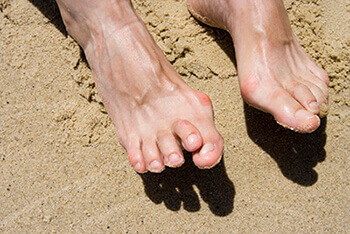 Hammertoes are painful deformities that frequently form on the second, third, or fourth toe. The condition is often caused by an issue in foot mechanics: the person’s particular gait or the manner in which they walk, or shoes that do not comfortably fit the deformity. Hammertoes can be formed after wearing shoes that are too narrow or short for the foot or have excessively high heels. Shoes that are not properly sized will force the toes into a bent position for long periods of time, causing the muscles to shorten and toes to bend into the deformity of a hammertoe.
Hammertoes are painful deformities that frequently form on the second, third, or fourth toe. The condition is often caused by an issue in foot mechanics: the person’s particular gait or the manner in which they walk, or shoes that do not comfortably fit the deformity. Hammertoes can be formed after wearing shoes that are too narrow or short for the foot or have excessively high heels. Shoes that are not properly sized will force the toes into a bent position for long periods of time, causing the muscles to shorten and toes to bend into the deformity of a hammertoe.
Hammertoe can also be caused by complications from rheumatoid arthritis, osteoarthritis, trauma to the foot, heredity, or a cerebral vascular accident. Pain and difficult mobility of the toes, deformities, calluses, and corns are all symptoms of a hammertoe.
Someone who suspects they have the symptoms of a hammertoe should consult with a physician—particularly a podiatrist. Podiatrists diagnose and treat complications of the foot and ankle. If the podiatrist discovers that the affected toes are still flexible, treatment for the hammertoe may simply involve exercise, physical therapy, and better-fitting shoes. Treatment for hammertoes typically involves controlling foot mechanics, such as walking, through the use of customized orthotics.
For more serious cases in which the toes have become inflexible and rigid, surgery may be suggested. During the operation, the toe would receive an incision to relieve pressure on the tendons. A re-alignment of the tendons may then be performed by removing small pieces of bone to straighten the toe. In some cases, the insertion of pins is needed to keep the bones in the proper position as the toe heals. The patient is usually allowed to return home on the same day as the surgery.
If surgery is performed to repair a hammertoe, following the postoperative directions of your doctor is pertinent. Directions may include several stretches, picking up marbles with your toes, or attempting to crumple a towel placed flat against your feet. Wear shoes that have low heels and a wide amount of toe space to maintain comfort. Closed shoes and high heels should be avoided. Shoes with laces allow the wearer to adjust how fitted her or she may want the shoes to be and also allow for greater comfort. To provide adequate space for your toes, select shoes that have a minimum of one-half-inch of space between the tip of your longest toe and the inside of the shoe. This will also relieve pressure on your toes and prevent future hammertoes from forming.Other preventative measures that can be taken include going shopping for new shoes in the middle of the day. Your feet are its smallest in the morning and swell as the day progresses; trying on and purchasing new shoes midday will give you the most reliable size. Be sure to check that the shoes you purchase are both the same size. If possible, ask the store to stretch out the shoes at its painful points to allow for optimum comfort.
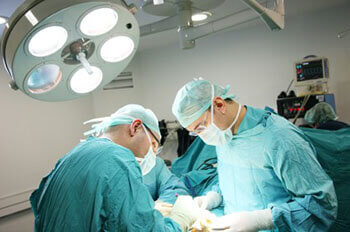 In most cases, foot surgery is often chosen as the last-available option for conditions that have otherwise been unsuccessfully treated. Surgery may be necessary for several reasons, including the removal of foot deformities (e.g. bone spurs or bunions), arthritis problems, reconstruction due to injury, and congenital malformations (e.g. club foot or flat feet). Regardless of one’s age, foot surgery may be the only successful option for treatment for certain conditions.
In most cases, foot surgery is often chosen as the last-available option for conditions that have otherwise been unsuccessfully treated. Surgery may be necessary for several reasons, including the removal of foot deformities (e.g. bone spurs or bunions), arthritis problems, reconstruction due to injury, and congenital malformations (e.g. club foot or flat feet). Regardless of one’s age, foot surgery may be the only successful option for treatment for certain conditions.
The type of surgery one undergoes depends on the type of foot condition the patient has. For the removal of a growth, such as a bunion, a bunionectomy is necessary. If the bones in the feet need to be realigned or fused together, a surgical fusion of the foot is needed. For pain or nerve issues, a patient may require surgery in which the tissues surrounding the painful nerve are removed. Initially, less invasive treatments are generally attempted; surgery is often the last measure taken if other treatments are unsuccessful.
While in many cases surgery is often deemed as the final resort, choosing surgery comes with certain benefits. The associated pain experienced in relation to the particular condition is often relieved with surgery, allowing patients to resume daily activities. The greatest benefit, however, is that surgery generally eliminates the problem immediately.
Podiatry history has shown that foot treatments continue to evolve over time. In the field of foot surgery, endoscopic surgery is just one of the many advancements. As technology vastly improves, so will the various techniques in foot surgery, which already require smaller and smaller incisions with the use of better and more efficient tools. Thanks to such innovations, surgery is no longer as invasive as it was in the past, allowing for much faster and easier recoveries.
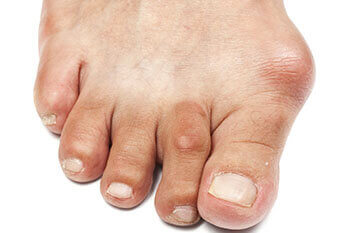 A bunion is an enlargement of boney growth or swollen tissue typically located at the base joint of the big toe. The condition is caused by the shifting of the bones in the big toe inward, toward the other toes of the foot. The area around the base of the big toe may become inflamed, red, and painful.
A bunion is an enlargement of boney growth or swollen tissue typically located at the base joint of the big toe. The condition is caused by the shifting of the bones in the big toe inward, toward the other toes of the foot. The area around the base of the big toe may become inflamed, red, and painful.
Genetic factors are important in the formation of bunions – people who get bunions are usually genetically predisposed to this bone displacement and may cause its onset by wearing ill-fitting shoes or by running or walking in a way that causes stress to the feet. Another common cause for bunions is wearing high heeled shoes. The weight of the body in these shoes pushes the toes into an unnatural position, possibly causing bone displacement.
A podiatrist who specializes in foot structure and biomechanics can quickly diagnose bunions. Bunions must be distinguished from gout or arthritic conditions, so blood tests may be necessary. The podiatrist may order a radiological exam to provide an image of the bone structure. If the x-ray demonstrates an enlargement of the joint near the base of the toe and a shifting toward the smaller toes, this is indicative of a bunion.
Wearing wider shoes can remove the pressure on the bunion and reduce pain. High heeled shoes should be eliminated for a period of time as this type of shoe generally pushes the big toe outward toward the smaller toes. This may be enough to eliminate the pain associated with bunions; however, if pain persists, anti-inflammatory drugs may be prescribed. Severe pain may require an injection of steroids near the bunion.
Orthotics for shoes may be prescribed which, by altering the pressure on the foot, can be helpful in reducing pain. These do not correct the problem, but by eliminating the pain, they can provide relief.
For cases that do not respond to these methods of treatment, surgery can be done to reposition the toe. A surgeon may do this by either taking out a section of bone or by rearranging the ligaments and tendons in the toe to help keep it properly aligned. It may be necessary even after surgery to wear more comfortable shoes that do not put pressure on the toe as the big toe can easily move back to its orientation toward the smaller toes.

Oftentimes, by the time you are diagnosed with diabetes, you have had to make some changes to maintain a healthy blood sugar level. The following are ways in which diabetes can change your lifestyle and tips keep your body healthy.
Have issues with your feet due to diabetes? Here are some additional tips. For problems, consult with our podiatrist, Dr. Jonathan M. Kletz, at Texas Foot Works. He will assess your feet and ankles to properly diagnose and treat any issue you may have. Make an appointment today at any of our Abrams (Dallas), Athens, and Gun Barrell City, TX offices!

Athletes are far too familiar with the fact that some of the most common foot and ankle injuries happen while participating in sports. However, they are not the only ones at risk. Trips, falls, ankle twists, and overuse injuries can happen to anyone, at any time. That’s why it’s important for all of us to take steps to reduce our risk of footand ankle injuries.
Try doing some of the following foot flexibility exercises whenever you have the chance. Some of them can be done while watching TV, while doing chores, and even as a fun “challenge” so that you can get your children involved too. Since they are still growing, it’s important that they are safe from injury to prevent developmental issues as their bones and joints set.
Stretching Activities
Strengthening Activities
Balancing Activities
Always use protective footwear and gear. Use shoes that are appropriate for the activity to prevent injury. Finally, if you have a job where you stand or have to walk a lot each day, you may want to invest in orthotic shoes that are supportive and cushioned to prevent overuse injuries.
Do you have a sports injury? Or do you think you can benefit from custom orthotics? Then consult with our podiatrist, Dr. Jonathan M. Kletz, at Texas Foot Works. He will assess your children’s feet and ankles to properly diagnose and treat any issues. Make an appointment today at any of our Abrams (Dallas), Athens, and Gun Barrell City, TX offices!
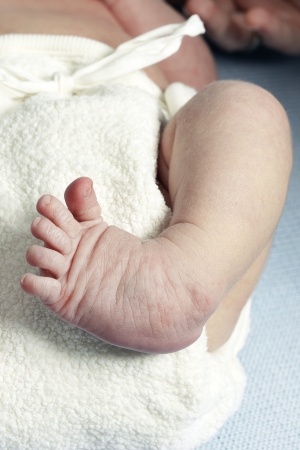
After months of carrying a baby, and then hours of laboring, the last thing parents want to hear is that the baby has an issue. The delicate (but resilient!) infant has so much to face in the coming days, months, and years, that a complication is upsetting. So when the baby has a congenital birth defect, such as clubfoot, it’s only natural that parents would be worried. But we’re here to tell you that clubfoot is one problem that can easily be identified and solved.
Soon after birth, clubfoot can be easily identified when a foot (or both feet) is turned or twisted out of shape. This can be caused by developmental position in the uterus, short tendons, low amniotic fluid, or other hereditary factor. It can seem worse than it is, but rest assured – it’s almost immediately treatable!
Treating Clubfoot with the Ponseti Method
The most commonly used method for treating clubfoot is called the Ponseti method. The method uses the fact that babies are still very flexible and still growing and developing after birth. The following steps are involved:
If, for some reason, clubfoot is not treated as soon as they are diagnosed, babies will likely have problems learning to use their feet, especially when learning to crawl or walk. Eventually they will need to have major surgeries to reset bones in their proper position.
If your baby has or had clubfoot, regular appointments with our podiatrists will help maintain proper development of their feet and ankles. If your children need custom orthotics, consult with our podiatrist, Dr. Jonathan M. Kletz, at Texas Foot Works. He will assess your children’s feet and ankles to properly diagnose and treat the issue. Make an appointment today at any of our Abrams (Dallas), Athens, and Gun Barrell City, TX offices!

Do you know just how common Diabetes is? According to the Center for Disease Control, about 29.1 million adults in the US have diabetes, about 5% of them with Type 1 diabetes. Both types have to do with genetics and environmental factors, but the exact cause is still undetermined.
Do you know what diabetes is?
Do you know that diabetes is manageable?
Do you know that you might be more at risk if:
Do you know that diabetes affects the feet?
Now that you know, don’t forget to check your feet every day. If you have noticed numbness or tingling in your feet, it’s important that you consult with our podiatrist, Dr. Jonathan M. Kletz, at Texas Foot Works. He will assess your feet and ankles to properly diagnose the issue. Make an appointment today at any of our Texas offices in Abrams (Dallas), Athens, and Gun Barrell City!
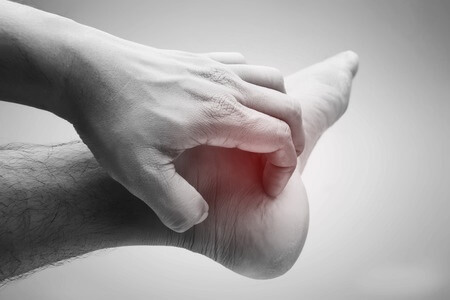
Small, red, itchy, and sometimes painful bumps that cover an area of the skin on your feet can be uncomfortable and embarrassing. How and why did it develop and what can you do about it?
The first step in figuring out what is happening is to have our podiatrist take a look, especially if it won’t go away or gets worse. You should also try to think about anything you may have changed or tried for the first time. Have you come in contact with some poison ivy? Did you buy new leather shoes and sweat in them? Maybe you walked around barefoot in a locker room floor because you forgot your flip-flops?
There are several possible causes of rashes on your feet, including:
Perhaps your rashes didn’t develop all of a sudden, or for the first time. This time, however, maybe you noticed it more because it was worse than before, or maybe you just can’t take the discomfort and need better treatment options. This could be a chronic issue that affects your whole foot or all over your body.
If you are worried about a skin rash on your feet or ankles, consult with our podiatrist, Dr. Jonathan M. Kletz, at Texas Foot Works. He will assess your feet and ankles to properly diagnose what’s going on. Make an appointment today at any of our offices in Abrams (Dallas), Athens, and Gun Barrell City, TX!

What is that acronym, you might wonder. Does it have something to do with peanut butter and jelly? Well, actually, it stands for World Pediatric Bone and Joint Day! Continuing the theme of Bone and Joint Action week, tomorrow, October 19th is designated to raise awareness about how musculoskeletal diseases affect children. The reason is that 10% of those who have a disabling bone and joint problem are children. Additionally, some of the adults that are affected by musculoskeletal disease have been affected since childhood.
The focus of this year is on how obesity affects children’s bone and joint disorders. The best way to reduce the risk of long-term musculoskeletal problems is to take preventative measures when children are young. However, when children are obese, they are at higher risk of developing bone and joint problems, even while they are young. Much of the lasting problems can start as acute or overuse injuries to the growth plates in the back, hips, and legs (knock knees).
So how can you help your child? You can help them take some preventative measures and make sure that they get treatment for current problems. Here are some tips:
Have concerns about pb&j health? Consult with our podiatrist at Texas Foot Works, Dr. Jonathan M. Kletz. He will assess your feet and ankles for any musculoskeletal conditions that may affect them. Make an appointment today at any of our offices in Abrams (Dallas), Athens, and Gun Barrell City, TX!
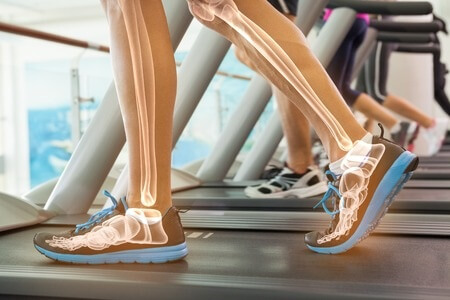
Why the focus, specifically on bones and joints? Well, October 12th-20th is Bone and Joint Action Week! According to the US Bone and Joint Initiative, more than half of the population who are at least 18 years old have musculoskeletal conditions. So you can see why it’s important to talk about how we can take care of our bones and joints!
What are common musculoskeletal conditions?
Anything that affects our bones, joints, nerves, and soft tissues (muscles, ligaments, tendons) are musculoskeletal issues. These include: arthritis, osteoporosis, back pain, traumatic injury, spinal deformity, as well as childhood conditions.
How can you take care of your bones and joints?
Start now! The older you get, the more likely it is for your bones and joints to begin get weaker. When bones have low density, they are more at risk of breaking or fracturing. Cartilage can also wear down, causing problems with the joints, and ligaments and tendons can stretch or collapse, changing the shape and function of the affected body parts (e.g. adult-acquired flat foot).
Taking care of your bones and joints essentially comes down to two important factors:
Physical Activity
Have more questions about bone and joint health, especially as it relates to the 26 bones, 33 joints, and over 100 soft tissues that make up each foot? Consult with our podiatrist at Texas Foot Works, Dr. Jonathan M. Kletz. He will assess your feet and ankles for any musculoskeletal conditions. Make an appointment today at any of our Abrams (Dallas), Athens, and Gun Barrell City, TX offices!